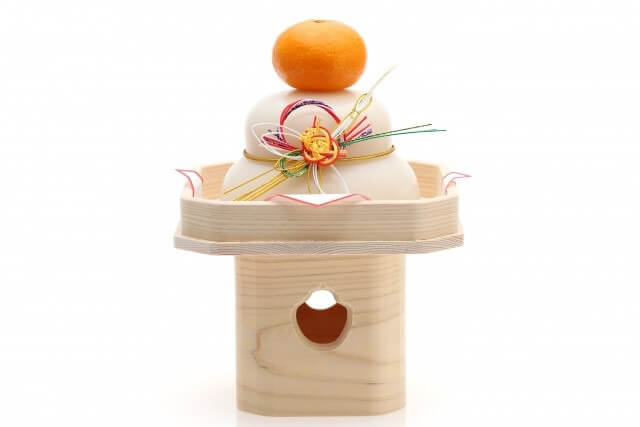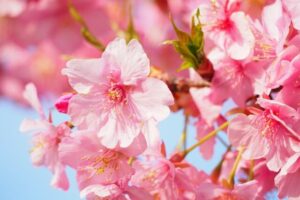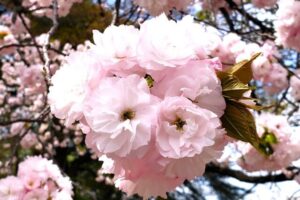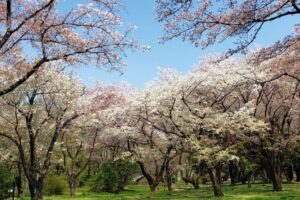外国人から「鏡餅って何ですか?」と聞かれたら、英語で答えられますでしょうか?
 woman
woman(「鏡餅」って何ですか?)



鏡餅って英語で何て説明すればいいのかしら?
外国人に鏡餅をどうやって説明すればいいのか?
そんな疑問にお答えします。
鏡餅は英語で「Japanese traditional new year decoration(日本の伝統的な新年の飾り)」です。



(鏡餅は、お餅で作った、日本の伝統的な新年の飾りです。)
鏡餅について英語で説明する例文を一緒に見て行きましょう。
鏡餅を英語で説明
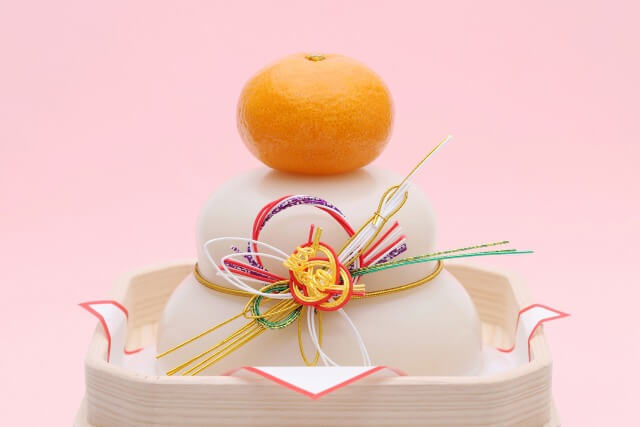

Kagami mochi is a traditional Japanese New Year decoration made from mochi.
鏡餅は、お餅で作った、日本の伝統的な新年の飾りです。
- Kagami mochi/鏡餅
- traditional/伝統的な
- Japanese/日本の
- New Year/新年
- decoration/飾り
- made/make(作る)の過去形・過去分詞
- from/~から
- mochi/お餅
Kagami mochi is generally made by stacking two round rice cakes and placing orange on top of them.
鏡餅は、2つの丸餅を重ね、その上に橙をのせるのが一般的です。
- Kagami mochi/鏡餅
- generally/一般的に
- made/make(作る)の過去形・過去分詞
- by/~で
- stack/重ねる
- two/2
- round/丸い
- rice cake/餅
- place/のせる
- orange/橙(ダイダイ)
- top/上
- them/それら
Kagami mochi is an offering to the grain god Toshigami.
鏡餅は、穀物神である年神への供え物です。
- Kagami mochi/鏡餅
- offering/供え物
- grain god/穀物神
- Toshigami/年神
Kagami mochi is also the place where Toshigami lives.
鏡餅は、年神が宿る場所でもあります。
- Kagami mochi/鏡餅
- also/~もまた
- place/場所
- Toshigami/年神
- live/宿る、住む



(お餅で作った飾りなのね。)
鏡餅の名前の由来を英語で説明
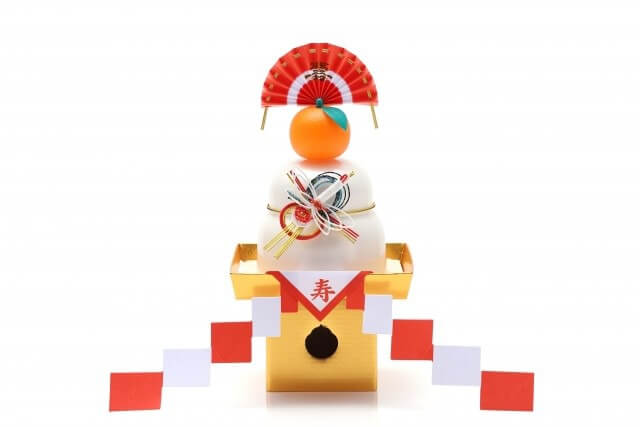

Kagami mochi is written in Chinese characters as Mirror rice cake.
鏡餅は、漢字で鏡の餅と書きます。
- Kagami mochi/鏡餅
- written/write(書く)の過去分詞
- Chinese characters/漢字
- as/~として
- Mirror/鏡
- rice cake/餅
The name Kagami Mochi comes from the fact that the round rice cake resembles an old mirror.
鏡餅と言う名前は、丸い餅が、昔の鏡に似ていることに由来しています。
- name/名前
- Kagami Mochi/鏡餅
- come from/由来する
- fact/こと、事実
- round/丸い
- rice cake/餅
- resemble/似ている
- old/昔の
- mirror/鏡
The old mirror was a round mirror made of bronze.
昔の鏡は青銅で作られた、丸い鏡でした。
- old/昔の
- mirror/鏡
- round/丸い
- made of/~で出来ている
- bronze/青銅
Mirrors were once thought to be where god dwells because they reflect light and shine.
鏡はかつて、光を反射して光る事から、神様が宿るものと考えられていました。
- mirror/鏡
- once/かつて
- thought/think(思う・考える)の過去形・過去分詞
- where/~する場所
- god/神
- dwell/住む
- because/~だから
- reflect/反射する
- light/光り
- shine/光る



(鏡餅という名前は、「鏡」に由来するのね。)
鏡餅の歴史を英語で説明
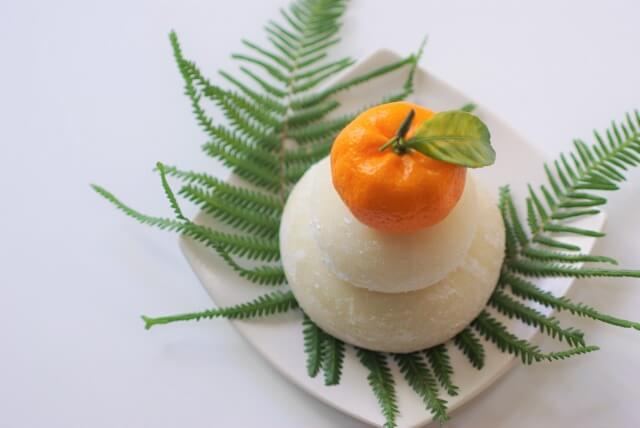

Kagami mochi already existed in the Heian period.
鏡餅は、平安時代には既に存在していました。
- Kagami mochi/鏡餅
- already/既に
- exist/存在する
- Heian period/平安時代
The feature-length story “Genji Monogatari”, which represents the Heian period, has a description of Kagami mochi.
平安時代を代表する長編物語「源氏物語」には、鏡餅の記載があります。
- feature-length story/長編物語
- Genji Monogatari/源氏物語
- represent/代表する
- Heian period/平安時代
- description/記述
- Kagami mochi/鏡餅
Since the Muromachi period, when the alcove was installed in the house, the kagami mochi was decorated in the same way as it is today.
室町時代以降、家の中に床の間が設置されるようになると、鏡餅は現在と同じように飾られるようになりました。
- since/~以降
- Muromachi period/室町時代
- alcove/床の間
- install/設置する
- house/家
- kagami mochi/鏡餅
- decorate/飾られる
- same/同じ
- way/方法
- as it is today/今日のように
It is said that in the samurai house, armor and helmet were displayed in the alcove, and Kagami mochi was displayed in front of it.
武士の家では、床の間に鎧と兜を飾り、その前に鏡餅を飾ったと言われています。
- it is said that/~と言われている
- samurai/武士
- house/家
- armor/鎧
- helmet/兜
- display/飾る
- alcove/床の間
- Kagami mochi/鏡餅
- in front of/~の前に



(随分古くから鏡餅はあるのね。)
鏡餅の飾り方を英語で説明
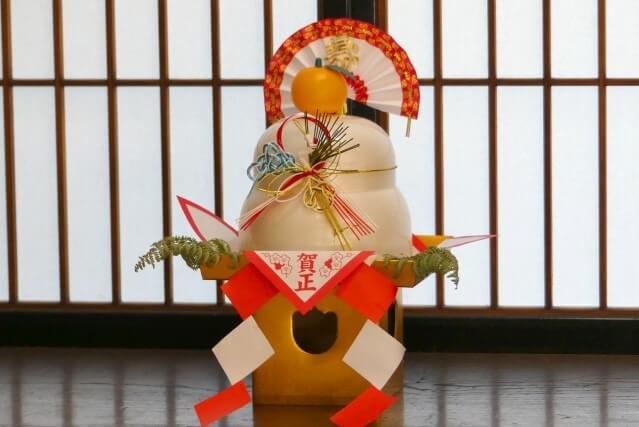

On a small wooden stand called Sanpo, Japanese paper colored in red on all sides is laid.
三方(さんぽう)と呼ばれる小さな木の台に、四方が紅く彩られた和紙を敷きます。
- small/小さな
- wooden/木の
- stand/台
- call/呼ぶ
- Sanpo/三方
- Japanese paper/和紙
- color in/~に色づけする
- red/赤
- all sides/四面
- laid/lay(置く)の過去形・過去分詞
Place a long piece of folded paper and fern leaves on the Sanpo.
三方の上に、折った長い紙とシダの葉をのせます。
- place/置く
- long/長い
- piece of/一片
- fold/折る
- paper/紙
- fern/シダ
- leaves/leaf(葉)の複数形
- Sanpo/三方
Place two large and small round rice cakes on top of the Sanpo.
三方の上に、大小2つの丸いお餅を重ねます。
- place/置く
- two/2
- large/大きい
- small/小さい
- round/丸い
- rice cake/お餅
- on top of/~の上部に
- Sanpo/三方
Place orange on top of mochi and decorate with dried persimmons and kelp.
お餅の上に橙をのせ、干し柿や昆布などを飾ります。
- place/置く
- orange/オレンジ、橙(ダイダイ)
- on top of/~の上部に
- mochi/お餅
- decorate with/~で飾る
- dried persimmon/干し柿
- kelp/昆布



(とてもユニークな飾り付けね。)
鏡餅を飾る時期を英語で説明


December 28th is the best time to decorate Kagami Mochi.
鏡餅を飾るのは、12月28日が最適とされています。
- December 28th/12月28日
- the best time/最高の時
- decorate/飾る
- Kagami Mochi/鏡餅
In Japan, the number “9” leads to the meaning of “suffering”, so December 29th should be avoided.
日本では、「9」という数字が「苦しむ」と言う意味につながるので、12月29日は避けるべきとされています。
- Japan/日本
- number/数字
- lead to/~につながる
- meaning/意味
- suffering/苦しみ
- so/だから
- December 29th/12月29日
- should/すべき
- avoid/避ける
December 30th is said to be a good day to decorate Kagami Mochi.
12月30日は、鏡餅を飾るのに問題ない日とされています。
- December 30th/12月30日
- is said to be/~と言われている
- good/良い
- day/日
- decorate/飾る
- Kagami Mochi/鏡餅
Decorating on December 31st is called “overnight decoration” and is said to be unlucky.
12月31日に飾ることは「一夜飾り」と呼び、縁起が悪いとされています。
- decorate/飾ること
- December 31st/12月31日
- call/呼ぶ
- overnight/一夜
- decoration/飾り
- is said to be/~と言われている
- unlucky/縁起が悪い



(鏡餅を飾るのに最適な日があるのね。)
鏡開きを英語で説明
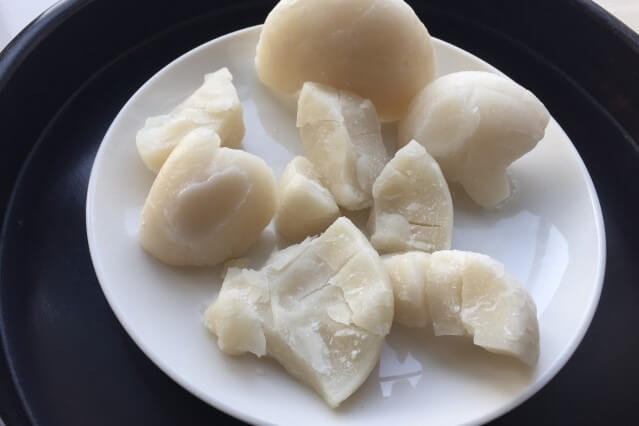

Kagami biraki is an event to eat Kagami mochi on January 11th.
鏡開きとは、1月11日に、お正月に飾った鏡餅を食べる行事です。
- Kagami biraki/鏡開き
- event/行事
- eat/食べる
- Kagami mochi/鏡餅
- January 11th/1月11日
It is said that it is unlucky to cut the rice cakes offered to god with a knife, so use a mallet to make the rice cakes finer.
神様に供えたお餅を刃物で切るのは縁起が悪いとされているため、お餅は木槌などを使って細かくします。
- it is said that/~と言われている
- unlucky/縁起が悪い
- cut/切る
- rice cake/お餅
- offer/供える
- god/神
- with/~で
- knife/刃物
- so/なので
- use/使う
- mallet/木槌
- make A B/AをBにする
- rice cake/お餅
- fine/細かい
Kagami mochi decorated on New Year’s Day is hard and dry and cracked, so usually the mochi is boiled and softened before eating.
お正月に飾った鏡餅は固く乾燥してひび割れているので、通常は、お餅は煮て柔らかくしてから食べます。
- Kagami mochi/鏡餅
- decorate/飾る
- New Year’s Day/お正月
- hard/固い
- dry/乾燥した
- cracked/ひびの入った
- so/だから
- usually/通常は
- mochi/お餅
- boil/煮る
- soften/柔らかくする
- before/~前に
- eat/食べる
It is said that by eating the kagami mochi that god dwells in, you can share your ability to stay healthy without getting sick.
神様が宿っていた鏡餅を食べることで、病気をせずに健康で過ごせる力を分けてもらえると言われています。
- it is said that/~と言われている
- by/~によって
- eat/食べる
- kagami mochi/鏡餅
- god/神
- dwell/住む
- can/できる
- share/分け合う
- ability/力
- stay healthy/健康でいる
- without/~なしに
- get sick/病気になる



(お正月に飾った鏡餅を食べるのね。)
鏡餅を英語で説明|まとめ
いかがでしたでしょうか?
鏡餅は、お正月には日本中の多くの家庭で飾られる、代表的なお正月飾りです。
鏡餅の飾り方は、地域によって様々ですが、丸いお餅を2段重ねて橙をのせるのが一般的です。
鏡餅の飾り方や、飾る時期にも、一定のルールがあります。
鏡開きでは、お供えしたお餅を食べます。
日本のお正月の伝統的な飾りである鏡餅を、是非、外国人にも英語で紹介してみて下さい。





